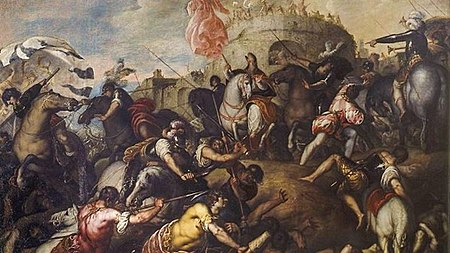Siege of Chartres (911)

The Siege of Chartres took place in spring 911 during the age of Viking incursions in Europe. The Viking leader, Rollo, and his men laid siege to the city of Chartres, in West Francia. But they failed to achieve their goal before the arrival, in July 911, of a relief army sent to battle them. The engagement that ensued resulted in the defeat of the Norsemen. Although, Viking raids were far from being a rare occurrence as the Frankish realms had to contend with such sudden incursions for decades, this one would prove to have everlasting consequences on European history. Following Rollo's defeat, the King of the West Franks, Charles the Simple, granted him a territory in the northern lands of his kingdom in exchange of an oath of fealty and his religious conversion. This territory, located between the mouth of the Seine and Rouen, a city Rollo had previously raided and seized in 876, officially formed the fief known as the County of Rouen. This county, through kinship in the decades to come, would expand into what came to be known as the Duchy of Normandy.
Excerpt from the Wikipedia article Siege of Chartres (911) (License: CC BY-SA 3.0, Authors, Images).Siege of Chartres (911)
Impasse de l'Arbre de la Liberté, Chartres
Geographical coordinates (GPS) Address Nearby Places Show on map
Geographical coordinates (GPS)
| Latitude | Longitude |
|---|---|
| N 48.456 ° | E 1.484 ° |
Address
Impasse de l'Arbre de la Liberté
Impasse de l'Arbre de la Liberté
28000 Chartres
Centre-Val de Loire, France
Open on Google Maps









